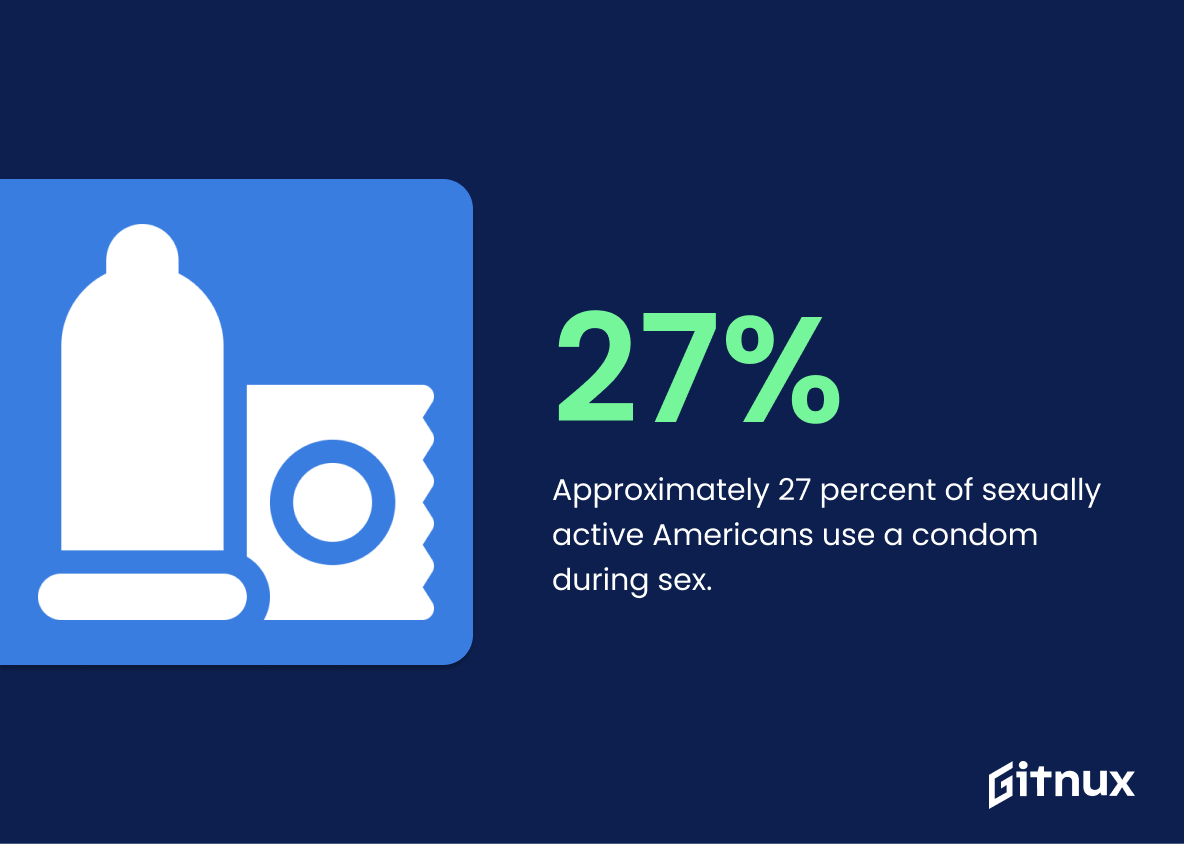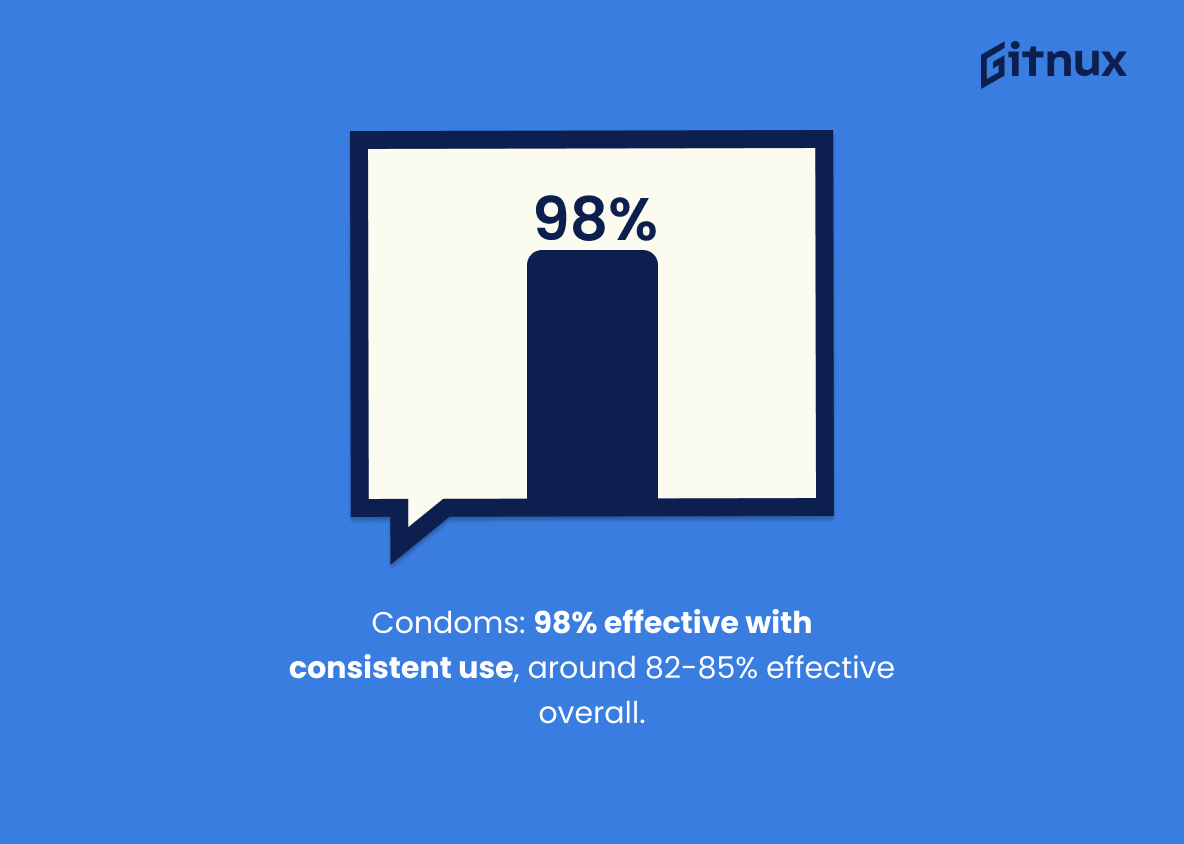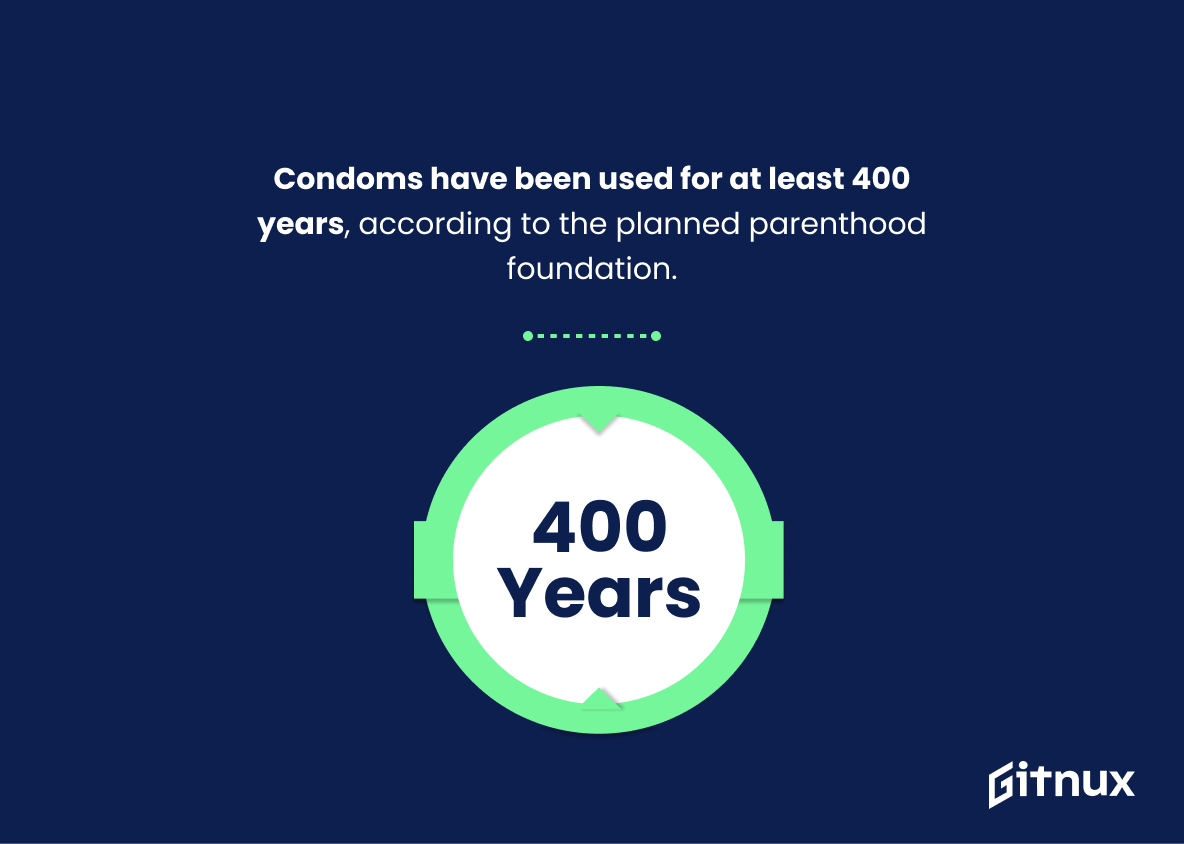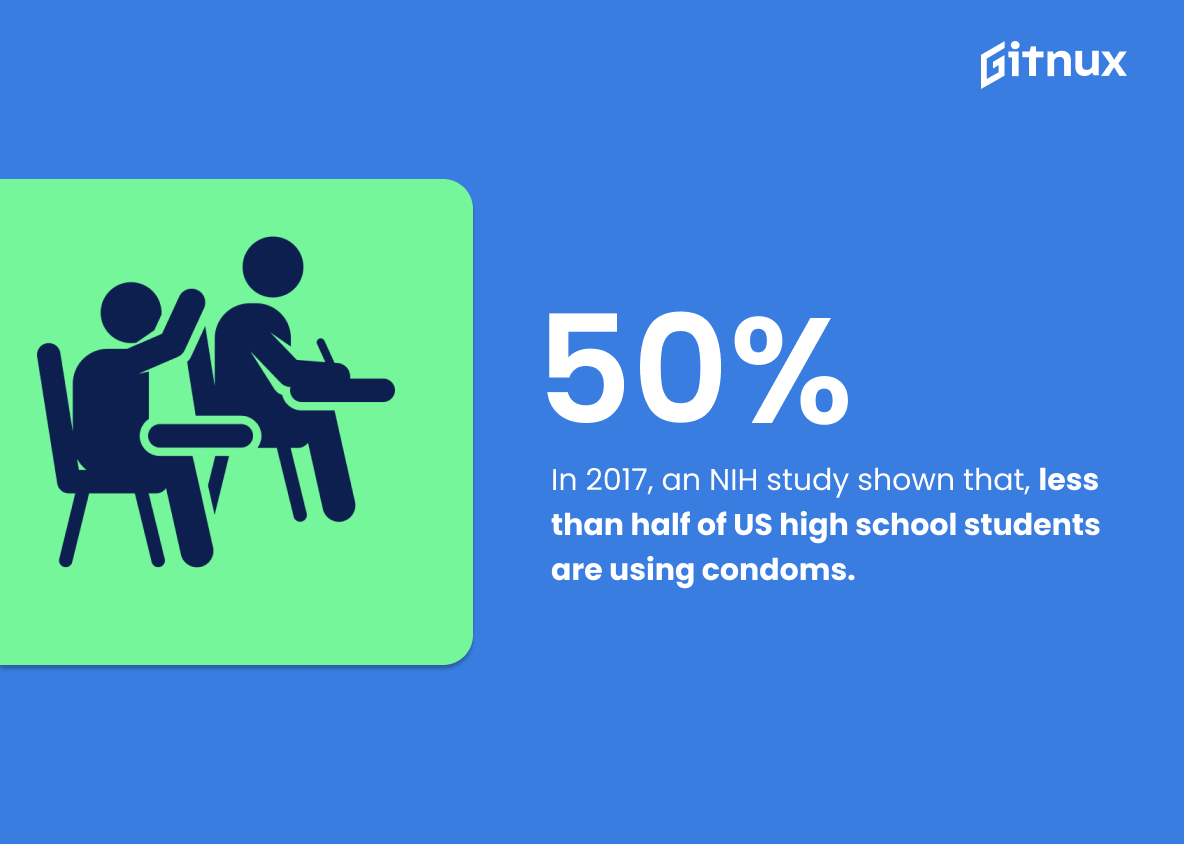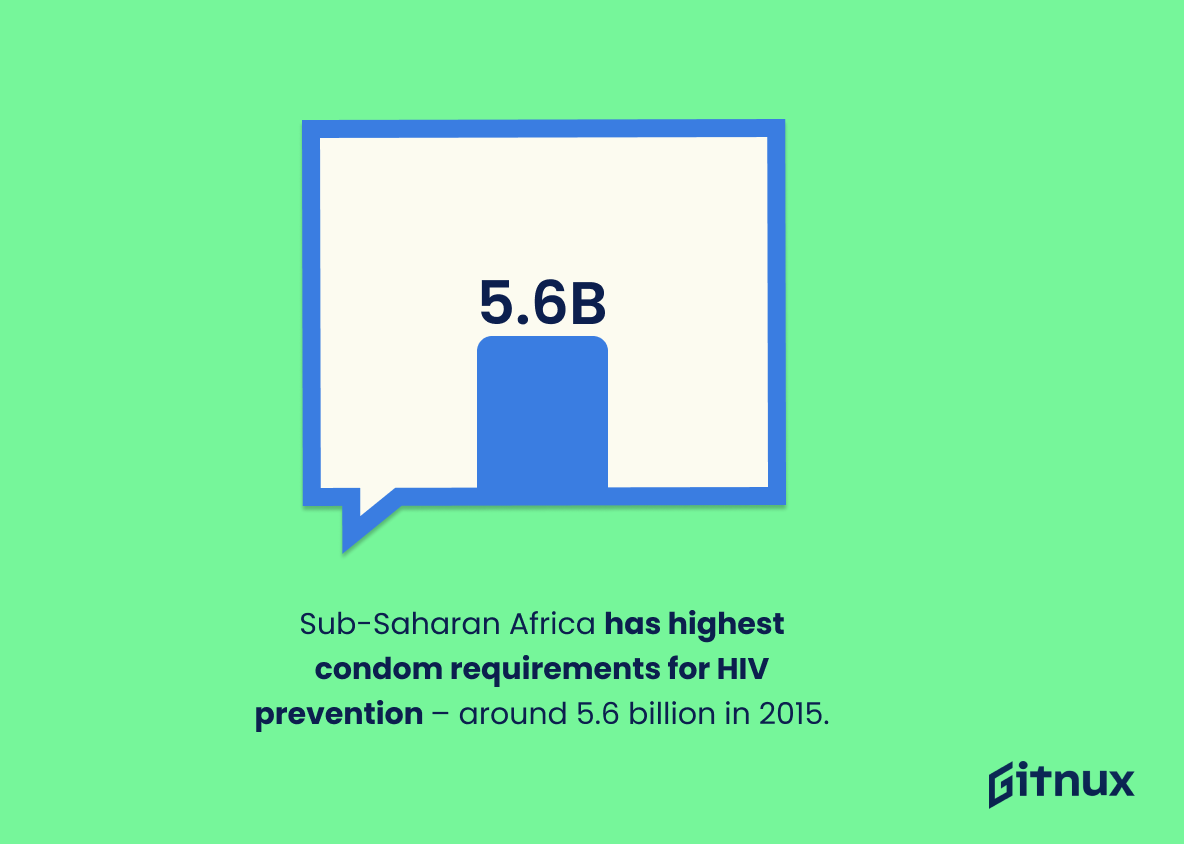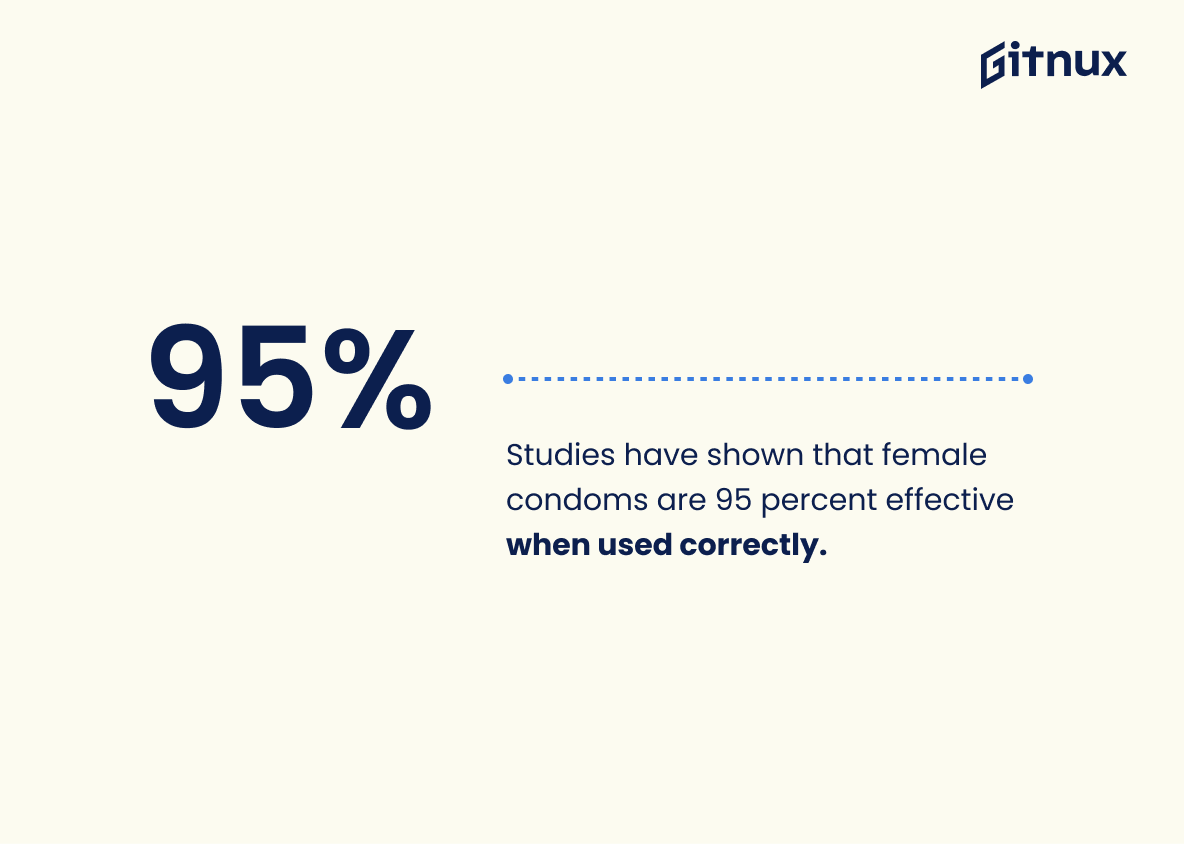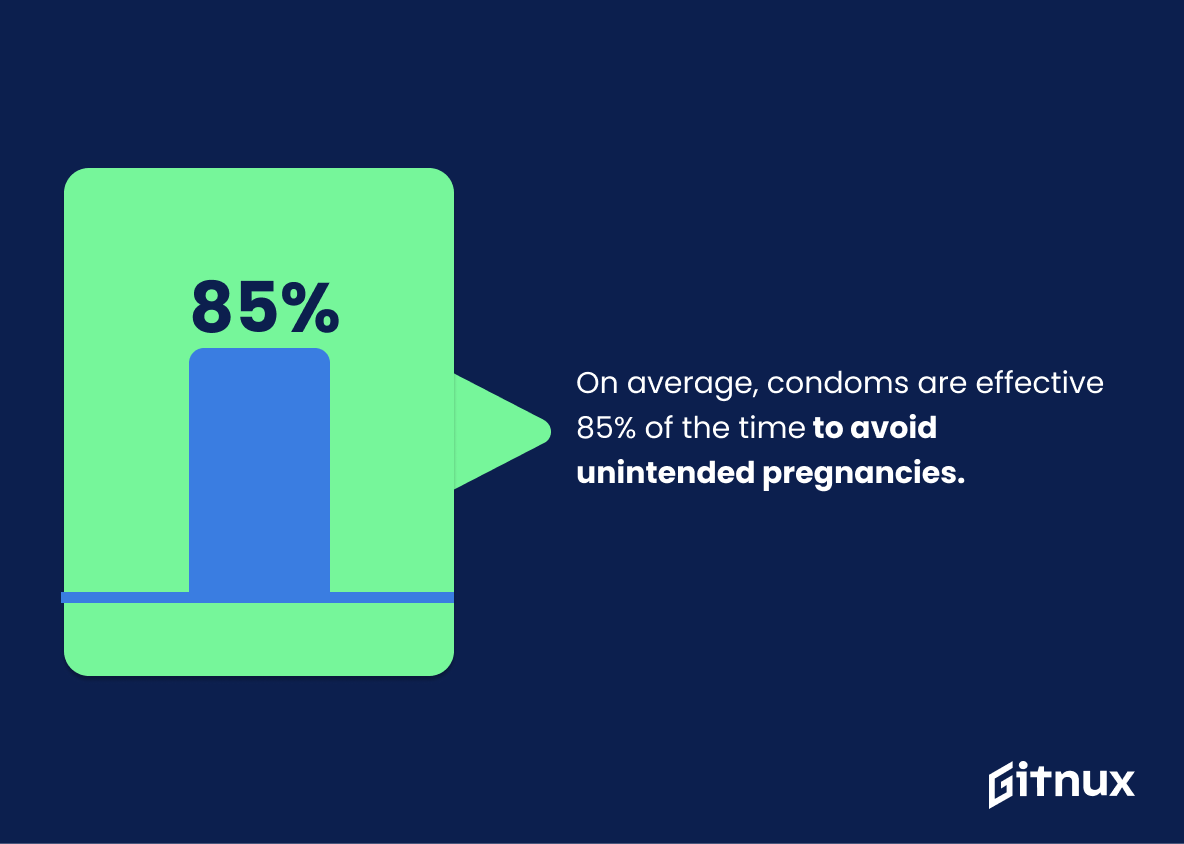In an ever-evolving world where sexual health and prevention are paramount, understanding condom usage and statistics is vital for public awareness. Welcome, curious readers and health enthusiasts, as we delve into an intriguing global perspective on condom statistics. We’ll unravel the layers of fact and fiction, decoding the numerical world behind one of the most commonly used contraceptives.
Whether you’re a sexual health advocate, a statistics fanatic, or simply hungry for knowledge, this exploration into the numeric universe of condom use is bound to enlighten and educate. Join us as we navigate the data-infused pathways standing at the intersection of sexual health and global trends.
The Latest Condom Statistics Unveiled
Approximately 27 percent of sexually active Americans use a condom during sex.
Examining the enthralling sphere of condom usage uncovers a startling revelation: Only about 27 percent of sexually active Americans are regularly garbing their passion with a latex sheath. A fraction that plays a central character in our narrative on “Condom Statistics”. This demographic snapshot doesn’t just count heads but highlights an essential aspect of sexual health.
Far beyond its mere numerical presence, it underlines the noteworthy void in the practice of safe sex – a considerable 73% – and offers cues for rightful introspection on our societal discourse around safety, pleasure, and responsibility in intimate liaisons. It’s a wake-up call with stark reminders, as much an opportunity as it is challenge, firmly reinforcing the vitality in furthering accessible and engaging sexual education.
While 98% effective when used consistently, actual condom effectiveness is estimated around 82-85%.
Diving into the world of condom statistics reveals an astonishing contrast – one could perceive an impregnable fort with a 98% shield of safety when used consistently, yet reality presents a less impenetrable defense, estimating actual condoms effectiveness around 82-85%. This juxtaposition unveils the intriguing reality lurking beneath the surface, that theory and practice often lead us down two different paths.
The practicality of human nature swirls through the consistency and effectiveness of condom use, underlining the inherent unpredictability that factors into sexual health decisions. Thus, this statistic becomes a gateway, inviting readers to examine the deeper factors at play in the realm of contraceptive efficacy.
In 2020, the global condom market was valued at approximately 7.93 billion U.S. dollars.
Undeniably, the provocative figure of 7.93 billion U.S. dollars, depicting the 2020 global condom market value, thrusts the spotlight on the colossal scale and significance of the condom industry. This monetary measurement not only highlights the robust business growth but also underscores the prevailing trend of rising awareness and acceptance of sexual health matters worldwide.
An inclusion of such a potent statistic in a blog post about condom statistics offers readers an intriguing panorama of the industry’s economic prowess, while subtly underlining its integral role in global health promotion endeavors.
About 450 million condoms are sold in America each year.
Highlighting an astounding figure of 450 million condoms sold annually in America underscores not just the enormity of the condom industry, but also serves as a testament to the increasing responsibility and consciousness amongst Americans towards safe sexual practices. This compelling data serves as the lifeblood of a blog post centered on Condom Statistics, shedding light on consumer behavior and raising important discussions about sexual health, contraceptive methods, and their corresponding societal implications.
Condoms have been used for at least 400 years, according to the planned parenthood foundation.
This revealing snippet of history, credited to the Planned Parenthood Foundation, offers us an intriguing time capsule into the past, positioning condoms not as a modern innovation, but as a centuries-old bastion against unwanted pregnancies and sexually transmitted infections. Stretching back a staggering 400 years, it adds a layer of perspective, showcasing a continuity of necessity and resourcefulness in human sexual health.
Crucially, it informs, educates, and encourages us to reflect on the longevity and importance of condoms within a historical context — a testament to their pervasive role in safeguarding sexual health across the ages. This proffers meaningful insights into not only the resourcefulness of our ancestors but also the enduring importance of this humble contraceptive tool, making this statistic an essential piece of the tapestry of condom statistics.
In 2017, an NIH study shown that, less than half of US high school students are using condoms.
In a society where sexual health and safe sex is becoming increasingly important, these numbers offer a startling revelation. The 2017 NIH study shows that less than half of US high school students are aware of, or practice, safe sex through condom use. This statistic not only highlights a gap in sexual education and awareness among our youth, but also underlines an urgent need for concerted efforts towards dissemination of information and resources surrounding condom use.
Within the larger dialogue of condom statistics, this piece of information stands as a call-to-action for educators, policymakers, and society as a whole, to prioritize and address the issue of safe sex and condom use among younger populations.
Sub-Saharan Africa has highest condom requirements for HIV prevention – around 5.6 billion in 2015.
Highlighted in the vibrant hues of global condom usage, Sub-Saharan Africa’s staggering need for 5.6 billion condoms in 2015 amplifies the importance of their role in HIV prevention. Illuminating the disparity between the continents, it underscores the criticality of widespread availability and accessibility of condoms in these high-risk areas.
This figure punctuates the narrative on global health and safety issues in an engaging and impactful way, pushing the discussion forward in the blog post about Condom Statistics. Adorned with these figures, the readers’ perspective on the importance of condom use might shift, recognizing condoms as a lifesaver rather than a mere contraceptive tool.
Studies have shown that female condoms are 95 percent effective when used correctly.
Imagine yourself in a labyrinth of numbers and percentages, trying to navigate the conversation on condom effectiveness. This illuminating figure – female condoms performing at a stellar 95 percent efficacy when used correctly – radiates like a beacon, guiding us through the discussion.
In the vast sea of condom statistics, this data volume is exceptionally crucial. It not only uplifts a narrative of effective protection but also underscores the importance of correct usage; a waving pennant reminding everyone that competence in use equals efficacy. Moreover, it paints an empowering picture for women, carving out a space for a woman’s proactive role in safe sex, thus contributing to a more inclusive understanding of sexual health and responsibility.
So, let’s not simply venture through the maze of statistics, but pause to appreciate each significant number and what it truly represents – in this case, a dual message of factual effectiveness and female empowerment.
On average, condoms are effective 85% of the time to avoid unintended pregnancies.
Accentuating the relevance of this statistic, the 85% effectiveness rate of condoms is a shining beacon of hope in relation to family planning, and highlights their significant role in preventing unintended pregnancies. Upon the canvas of a blog post about Condom Statistics, this figure paints a vivid picture of the medium’s practical efficiency.
Not only does it underline the importance of responsible sexual conduct, but it also implicitly emphasizes the need for improvement, as this capability is far from foolproof. This statistical testament opens minds and invites discussions around safer sexual practices, breaking walls of ignorance, and shaping a more informed narrative about condom use and its implications.
Global demand for condoms fell by nearly 50% during the early stages of the COVID-19 pandemic.
In the world where we’re spinning the globe of condom usage and sales, the sudden plummet of nearly 50% in global demand during the early stages of the COVID-19 pandemic presents an intriguing shift in patterns, as dramatic as a plot twist in a best-seller novel.
This seismic decrease is a critical element to the narrative, illuminating how global events and health crises can drastically impact consumer behavior, shaking the market dynamics to the core. It beckons a deeper exploration of the pandemic’s influence on sexual habits and health practices, painting a telling picture for our blog on Condom Statistics.
Condom use in men aged between 15 and 44 in the United States stands at about 33.7 percent.
This key figure of 33.7 percent reflects the reality of condom use among men aged 15 to 44 in the United States, forming the spine of our understanding when discussing condom statistics. Unfolding the broad picture of sexual health behaviors, it becomes a valuable point of reference on how safe sex habits are practiced or neglected.
It also prompts further inquiry into the reasons behind this rate – whether it’s ignorance, lack of access, or mere negligence. By scrutinizing this statistic, we gain the opportunity to address grey areas in sexual health education and condom accessibility, paving the way for strategies that can effectively push the rate higher, contributing towards a healthier, safer society.
Durex is the most popular condom brand in the United States, with a market share of 29.3 percent in 2017.
The commanding presence of Durex in the United States condom scene, holding a market share of 29.3 percent in 2017, speaks volumes in our discourse around Condom Statistics. The dominance of Durex lends it the prestige of becoming the nation’s top player in the race of rubber shielded protection, epitomizing the consumer preference in the condom industry.
This fact is impactful when one contemplates the entire realm of sexual health, disease prevention and contraceptive methods, shedding crucial light on user trends and consumption patterns. Through this statistic, the persuasive power Durex holds over its competitors neatly unfolds, underpinning the potential for market strategy study, product innovation insights and sexual behavioral analysis. Clearly, in the great chess game of condom manufacturing, Durex movingly declares checkmate.
The percent of American teenagers using a condom the first time they had sex increased from 46.2% in 2002 to 59.9% in 2017.
Diving into the sphere of condom statistics, the considerable uplift in condom usage among American teenagers from 2002 to 2017 paints a vivid picture of their changing attitudes and behaviors towards safe sex. This notable progression, from 46.2% to a more encouraging 59.9%, is testament to successful sexual education campaigns, and hints towards a more responsible generation in managing their sexual health.
Therefore, such an upward trend serves as a linchpin in discussions revolving around prevailing condom usage trends, effectively allowing us to analyze the evolving progression in safe sex practices among youth. This stat not only solidifies the importance of continuous sexual education, but also showcases an increase in public health awareness, both of which contribute to health promotion and disease prevention.
In 2017, only 23.8 percent of women aged 15–44 years in the United States used a condom for contraception.
Highlighting the statistic that in 2017, only 23.8% of women in the United States aged 15-44 used a condom for contraception casts a spotlight on just how far-reaching or limited the use of this form of contraception is among a prime demographic. In the landscape of our discussion on Condom Statistics, this serves as a robust benchmark of comparison.
Understanding this figure is like decoding the linchpin; it unravels layers of information about sexual health practices, prevention of sexually transmitted diseases, and unplanned pregnancies among American women. Such insights, whether they prompt exhilaration or concern, objectively enrich our conversation about the utilization and perception of condoms in society today.
Nearly 40% of unmarried men reported using condoms during their last sexual intercourse in the U.S.
Delving into the realm of condom usage, it’s intriguing to uncover that nearly 40% of unmarried men in the U.S. slipped on a condom during their most recent sexual act. This metric proffers invaluable insight into the intimate behavior amongst this demographic, suggesting that a significant segment is making a conscious decision to prioritize their sexual health alongside the prevention of unplanned pregnancies.
This particular condom statistic can serve as a conversation starter about safe sex norms, the prevalence of contraceptive usage, and attitudes towards sexual health within the bachelor class, contributing to a comprehensive outlook on condom statistics. As such, it’s a data point with potential to spearhead discussions about policies, educational outreach, and perception shifts within society.
Each year, only 8.7% of women aged 15–44 years rely on their partner’s use of condoms for contraception.
In the vast landscape of condom usage, this statistic offers an intriguing glimpse into the strategic use of contraceptives. With only 8.7% of women aged 15–44 years entrusting their partners with the responsibility of condom usage, the figure paints a vivid picture of dependency and decision-making in sexual health. Featured in a blog post about Condom Statistics, it offers a springboard for dialogue on the shared control of pregnancy prevention and STD protection, highlighting the need for awareness, discussions, and effective methods to increase reliance on this significant form of contraception.
The use of a condom during a woman’s first premarital sex increased from 34% in 1985 to 58% in 2009.
Highlighting this progressive climb from a mere 34% condom usage during a woman’s first premarital sex in 1985 to a significant 58% in 2009 does much more than just sharing numeric facts. Rather, it exhibits a vivid tapestry, one in which the threads of increased sexual health awareness, open discourses on safe sex, HIV/AIDS education, and societal changes intertwine.
A statistic like this doesn’t just provide numerical data; it underpins the narrative of shifting attitudes, evolving education, and advancing health protocols over a span of over two decades. In our exploration of condom statistics, such evolution offers insights into the bigger picture of success and challenges in sexual health campaigns so far, and potentially forecasts the trajectory to follow. It is, therefore, more than just a statistic – it’s a testament to change.
About 30% of men worldwide reported using a condom during their last sexual intercourse in a 2015 study.
In the realm of Condom Statistics, an intriguing point of focus is that a 2015 study uncovered the fact that only about 30% of men worldwide reported using a condom during their most recent sexual encounter. A statistic like this sparks vital conversations about health and personal responsibility. It gives us insight into the depth of the issue at hand – a sobering window into the worldwide habits and attitudes towards protected sex.
This pinpoints a significant gap in sexual health education and accessibility of contraceptives, further urging emphasis on these areas. Every statistic tells a story, and clearly, this one sketchs a landscape where there’s ample room for improvement and growth.
Globally, only 5% of men used a condom the last time they had paid sex according to a WHO report in 2013.
Undoubtedly, the startling figure from a 2013 WHO report, that reveals a mere 5% of men globally used a condom during their last encounter of paid sex, sends an emphatic wave across the landscape of condom statistics. Painted against the backdrop of our analysis, this number not only signifies a concerning lack of safe-sex practices but also sparks thoughtful discussions about public health, sex education, and personal responsibility.
Anchored around this statistic, the blog sheds light on two intertwined narratives. One is the individual risk – a significant 95% of men exposing themselves to sexually transmitted infections (STIs) and unintentional pregnancy. The other narrative investigates societal implications around the globe, including the strain these avoidable health care burdens place on resources and economies.
The blog therefore leaps off from this attention-grabbing stat, delving into the world of condom usage, the understanding (or sometimes misunderstanding) of their importance, and the role they play globally in promoting healthier, safe and responsible sexual behavior.
Conclusion
Navigating the landscape of safe sex is crucial not just for health but for overall peace of mind. Knowledge of condom statistics not only broadens perspective but also underscores the importance they hold in our lives.
Whether it’s the startling high success rate in preventing STIs and unplanned pregnancies or the burgeoning global market and demand for condoms, these figures hold invaluable information about global sexual health trends. As we continue to advocate for safe sex practices, the pivotal role of condoms in safeguarding the sexual health of millions worldwide should not be overlooked.
References
0. – https://www.www.cdc.gov
1. – https://www.www.who.int
2. – https://www.www.plannedparenthood.org
3. – https://www.www.ncbi.nlm.nih.gov
4. – https://www.www.statista.com
5. – https://www.www.healthline.com
6. – https://www.link.springer.com
7. – https://www.www.thehindu.com
8. – https://www.www.guttmacher.org
